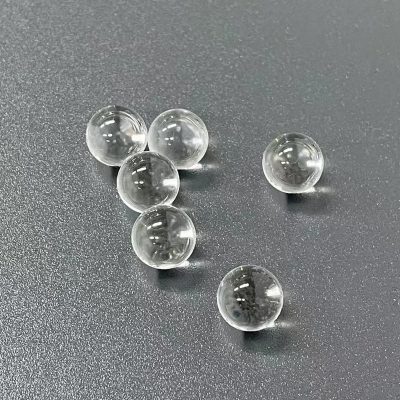
-
Ultra-high refractive index optical glass
Ultra-high refractive index optical glass
It mainly refers to heavy flint glass with a refractive index above 1.9, generally known as overweight flint or extra heavy flint glass.

-
High refractive index low dispersion optical glass
Refers to steel flint and heavy flint glass, its refractive index is higher than the heavy crown and heavy flint, dispersion is less than heavy flint glass. High refractive index and low dispersion glass to improve optical instruments, especially photographic objective lens image quality is important, is a new variety of optical glass in the development of a long history and a more mature class, but there are still deficiencies in the composition and physical and chemical properties of the glass, need to be further improved.

Optical Imaging Filters
-
Low refractive index and high dispersion glass
Similar to high refractive index and low dispersion glass, it is used to improve the image quality of wide-field optical systems. The introduction of fluoride in the glass can reduce the refractive index and the dispersion of the glass.
-
Low dispersion optical glass
It is mainly based on phosphate glass, including phosphorous crown glass and a part of fluorine crown glass. Compared with ordinary borosilicate crown glass, they have special relative partial dispersion in addition to larger Abbe number; The relative partial dispersion of the short wave curve is larger than that of the general crown glass, so it can be used as a special dispersive optical lens to eliminate the secondary spectrum.
-
Ultra-low refractive index optical glass
Refers to the refractive index of less than 1.40, Abbe number above 85 glass, is a kind of BeF? Although it has been studied for a long time, there is no official product supply at present. In addition to the physical and chemical properties of this kind of glass, the main reason is that the preparation process is very complex.
-
Special dispersion optical glass
According to its optical properties can be divided into two categories: ? Abbe number is small, and the relative part of the short-wave region of the dispersion of the glass is small, belongs to the flint glass; ? Abbe number, the relative part of the short-wave region of the dispersion of the glass is large? It belongs to corona glass.
-
Thermo-optic stabilized glass
With the change of ambient temperature, the optical system produces thermal distortion and reduces the quality of the image. Especially used in astronomy, cosmic space, target range and other precision optical instruments require the use of thermally stable optical glass. West Germany’s thermal distortion insensitive optical glass series AK, AF is such.

Distinction of composition
Optical glass is more pure in composition, finely controlled, and usually prepared with specific chemical formulations and higher purity raw materials to achieve the desired optical properties. The composition of ordinary glass is relatively simple, generally consisting of silicates and other impurities.
Difference in Preparation Process
Optical glass requires a precise preparation process, generally using high-temperature melting, vacuum heat treatment, precise control of cooling and other processes to manufacture, to ensure the stability and accuracy of optical properties. While ordinary glass generally adopts the conventional glass preparation process, the production cost is relatively low.
Difference in Optical Properties
Optical glass has higher refractive index, smaller dispersion, lower light absorption and other characteristics, its optical performance is relatively excellent. Therefore, optical glass can be widely used in lenses, prisms, optical filters and other optical devices for precise optical systems. On the other hand, ordinary glass has poor optical performance and is generally used in ordinary containers, building materials and other fields.
optlenses
Related posts
Dichroic Mirror: A Reliable Assistant in Gemstone Identification
What is the Iris Diaphragm Microscope?
What is an collimator and its application fields?
Confocal Microscopy:The Pioneer of High-Precision Imaging



